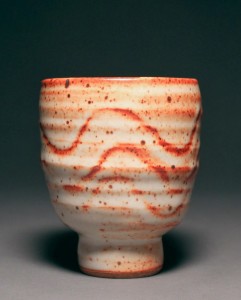
- This is a cone 10 glaze that likes a hot firing.
- What I love about it: it fires from creamy white to dark orange, thick to thin; it pinholes beautifully where you trim; it has a wonderful feel; it doesn’t crawl.
- What I am unsatisfied with: It crazes a bit too much; it is too shiny; it doesn’t crawl :).
EDIT:
I reformulated this glaze to try and eliminate the excessive shine. This particular recipe needs to be applied extremely thick or they will only turn out a rather boring flat orange. But when thick…oooooo baby it’s nice. Notice there is no soda ash. I took it out as it kept flocculating the glaze and turning it “thin” no matter how much material was mixed into the slurry. So to keep the glaze nice and thick, don’t add any soda ash.
New American Shino
42 Neph Sye
33 Ball Clay
25 Spodumene
- This is a cone 10 reduction glaze
- What I love about it: The matte quality in this glaze is fantastic (if it works); the yellow color is also a very gorgeous soft earthy yellow; it fades to a black rocky color when thin.
- What I hate about it: The glaze settles VERY fast; the yellow color comes only if you’re lucky; it tends to have a greenish hue; if you dip too thin it comes out a washed out stony black color that is very rough to the touch (but I sand it down and it is actually really nice after being sanded!); it is inconsistent as of yet…needs some tweaking.
- Cone 10 reduction glaze
- What I love about it: The grey is variable from thick to thin, going from brown to red to greenish to grey and sometimes even a wonderful sea blue; it’s a beautiful matte glaze that feels wonderful too; great for pouring over large pieces.
- What I don’t like about it: Not very durable–metal marks from silverware, acidic drinks left inside overnight will etch the glaze; crazes
- This is a cone 10 reduction glaze.
- I dip my mugs one time only but for 12-15 seconds each. This ensures a nice thick coating that gives a fantastic color.
- What I love: The temmoku has a beautiful black color and the red breaks are AMAZING; it doesn’t run when you dip for 15 seconds, even at cone 10.5; it looks amazing with coffee inside a temmoku glazed mug.
- What I don’t like: the dried raw glaze can easily transfer from your fingertips to a white glazed pot without you noticing, and then you have red fingerprints on white pieces. It can either show your stamp really well, highlighting the letters, or (most of the time) will just cover the stamp and you can’t read it. I wipe away a little of the glaze with my finger when its still very wet. This helps.
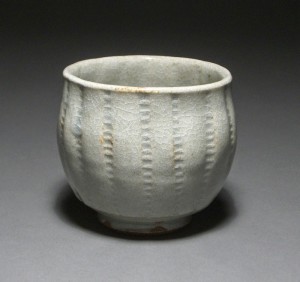
- Cone 10 glaze reduction
- What I like: a beautiful glaze I love for porcelain mostly but can be really great with iron-rich clays too; crazes beautifully; very subtle and a lifetime of visual pleasure.
- What I don’t like: sometimes it scums a little bit on the inside of cups or bowls.
*Barium Carbonate is poisonous when raw and should be tested once fired. Recently, Strontium has been an option for 1:1 replacement. However, these glaze recipes require very little Barium Carbonate and the materials are well melted and there is almost zero chance of getting poisoned from Barium Carbonate from these fired wares. But please, always test your glazes.
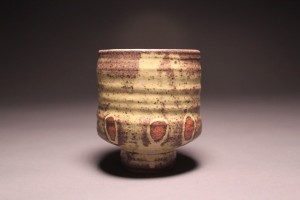
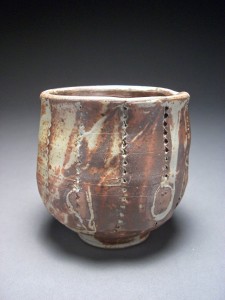
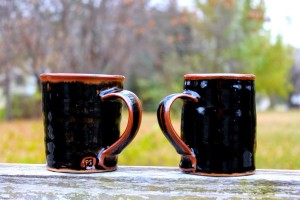
As a salt glaze potter I’m very interested in the the glazes pictured at the top of the glaze blog ( soda fire tests). Would like to have some idea of their composition. I know salt is different – but it would still be worth testing. Thanks for the other recipes – love the simplicity.
Hi John, The glaze tests were all found in John Britt’s Cone 10 book of glazes. I don’t have those recipes off the top of my head but I believe three of them were called Willie’s Helix, Amber Celadon (or honey?), and Hennessey Celadon. One may have been Elfin Rose Celadon too but I can’t remember anymore. I don’t think these were necessarily simple glazes in their makeup, either. But, maybe you could find one you like and tweak it so they require only a few ingredients. Good luck!
Thanks.
Thank you for sharing, especially your faith in God! I’m excited to try these recipes to my stoneware clay body (Star white, cone 10, Star, NC., near Seagrove) I’ll fired in gas reduction. Thank you for your inspiration!
Awesome! I was surprised the American Shino recipe turned a peachy light orange on a porcelain clay, very nice and unexpected. I’m betting it’s the ball clay in the recipe that provides just enough iron to make it blush. It might do the same on your star white! Also, I appreciate your encouragement with my faith in Jesus. Take care!